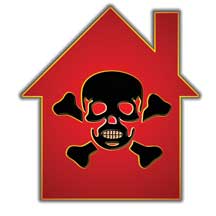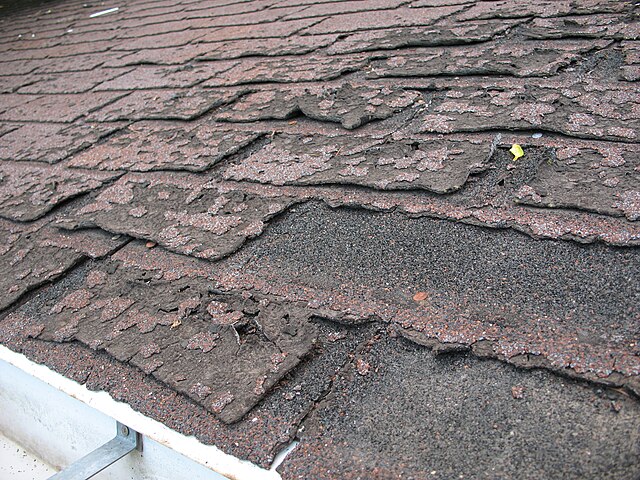Could Your Home Be Killing You?
Sick house syndrome has had a lot of press recently and it’s not surprising given that the one place in which you want to feel relaxed, nurtured and comfortable could actually be making you sick.

Image from ipcblog.org
If your health is keeping you up at night it could be the sign of an unhealthy home. Here are 10 ways your home could be affecting yours and your family’s health.
- Damp air – damp air is the biggest cause of moldy homes. Mold spores aren’t just unsightly and can cause damage to paintwork, walls and even furniture, they are actually really bad for our respiration and can aggravate conditions such as eczema and asthma. Whilst you may never be able to completely protect your home from mold attacks you can limit the spread by reducing the amount of moisture in the air thus removing the conditions in which mold thrives.
- Dirty vents – if you use an air conditioning unit and haven’t been on top of its regular maintenance and cleaning then you could be circulating dust, bacteria and germs every time you turn it on. This is because airborne nasties like to collect in the vents of air conditioning units and if they aren’t dealt with they can then find their way through the system and back out into the room just ready for your family to breathe them in. Check your vents and limit the circulation of bad air.
- An old bathroom – if your bathroom has seen better days the fixtures and fittings are more likely to come lose and loose their waterproof seals. When water is allowed to get into cracks it becomes stagnant causing all sorts of nasties to breed and not just mold. If you’re showerhead is looking a bit rusty and tired for example it could actually be filling the air with small particles of lead and other metals that can affect your liver and pulmonary system. An aging bathroom could be a serious hazard to your health.
- Poor ventilation – a poorly ventilated room, particularly the bathroom, creates the perfect condition for mold and bacteria to take hold. It doesn’t allow for the good circulation of fresh air and this can actually make you feel lethargic, confused and generally unwell as your body has to work harder to take in oxygen. Even if you work hard to eradicate the mold these conditions will just keep reappearing if poor ventilation is a problem in your home.
- Dust – if you are an allergy sufferer you will know how dangerous dust can be. Certain kinds of dust can trigger reactions ranging from a mild cough and sneeze to a full blown, life threatening asthma attack. It can also cause itchy eyes, now and throat and can be very uncomfortable in little ones. It can also contain bacteria that affects the gut over a sustained period of time.
- Musty bedroom – your mattress could be literally teeming with life if you don’t regularly vacuum it and let it air. This is because it gathers over half your bodyweight in dead skin every year and this is the delicacy of choice for bed bugs. Bed bugs sound harmless but they bite and you will soon notice little lumps and bumps that keep you itching long after daybreak.
- Chimneys and flues – if you have an open fire in your home and your chimney or flue isn’t working properly you are allowing smoke, ash and dirt to circulate through your home. Just as you would avoid smoke inhalation during a fire as this can be fatal, likewise you need to avoid it on the smaller scale by having properly operating and certified ventilation systems.
- Asbestos – it is impossible to know whether you have asbestos or not, particularly if you live in an older building. This is one nasty you really don’t want to be tackling on your own so you should always call out an expert to check that asbestos isn’t lurking in the fabric of your home, particularly if you are planning on undertaking any modifications or repairs. Not all asbestos is harmful but if it is it is toxic, which is why you should never remove it without the guidance and help of an expert.
- Radon – another common life threatening substance that could be present in your home is radon. Radon is a gas that is difficult to detect as it is both colorless and odourless but it causes thousands of cases of lung cancer in the USA every year. Again you should consult an expert to test for radon, particularly if you are in a radon hotspot. For more information check out the EPA website.
- Household chemicals – household cleaners and chemicals such as bleach can be harmful if in the reach of little fingers so always store any poisonous items in a sturdy, raised or lockable cupboard. However these chemicals can also harm you during day to day used in two ways. Firstly the overuse of chemicals in the home can lead to skin complaints and allergies particularly in the eyes, nose and throat. They can also prevent good bacteria from cultivating which can lead to a compromised immune system and more chance of picking up common colds and bugs. Try and use more natural, plant-based cleaners for a healthier approach to home maintenance.
If you are worried about any of these common household problems there are lots of things you can do to maintain a healthy home including:
- Regular maintenance – keeping your house well maintained means you are more likely to spot when mold or other bacteria is beginning to take hold
- Good cleaning regime – housework isn’t the most exciting pastime but it will keep dust and germs at bay as well as make your home more comfortable
- Open windows – help to ventilate that air and you can breathe deeply again
- Be vigilant – keep an eye out for problems and act fast before they take hold
- Call in the experts – if in doubt call in the experts, particularly if you don’t know what substance you might be dealing with. Your family’s health may depend on it



